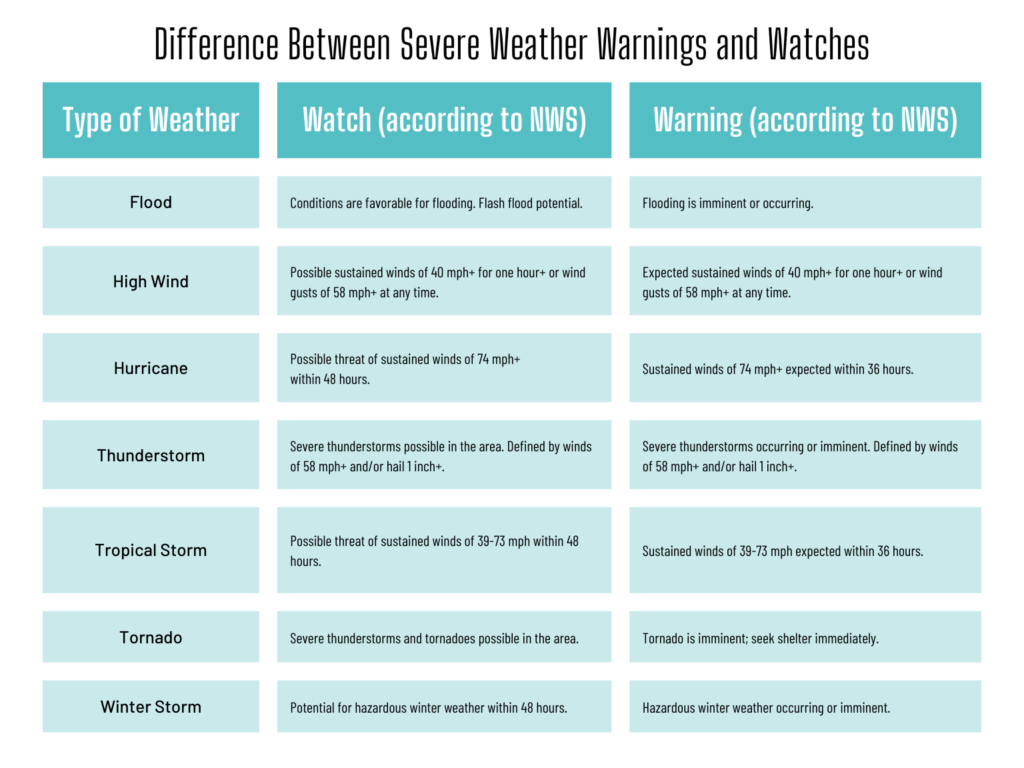A severe weather warning signifies that you need to take immediate shelter and precautions due to impending severe weather. In contrast, a weather watch indicates that conditions are favorable for severe weather to develop. While both terms alert you to potential severe weather, a warning is more urgent and serious than a watch.
Key Takeaways:
- Severe Weather Warning: Indicates that severe weather is already in your area, and you should take immediate cover.
- Severe Weather Watch: Indicates favorable conditions for severe weather, meaning you should stay alert and prepared.
Is a Severe Weather Watch or Warning Worse?
Both are significant, but a severe weather warning is generally more critical because it confirms that severe weather is occurring. A watch means that conditions are ripe for severe weather. If a watch is issued, remain vigilant as it can quickly escalate to a warning as weather conditions change.
What to Look For: Differences Between Warning and Watch
The indicators for weather watches and warnings differ based on the type of weather. The National Weather Service (NWS) defines watches and warnings for various weather alerts as follows:

What to Do When Storm Warnings and Watches Are Issued
If a storm warning is issued, take immediate cover to ensure the safety of yourself and your family. For a storm watch, use the additional time to secure your property. For instance, move any outdoor items that could become dangerous projectiles inside.
Make Sure You’re Protected When a Storm Hits
Severe weather can damage homes and vehicles. Ensure your insurance coverage is adequate to focus on safety during a storm.
New NavSav Insurance Customers
Get a quote for auto, homeowners, renters, or condo insurance online or call 1-888-800-1475 for customized coverage to protect you when severe weather strikes.
